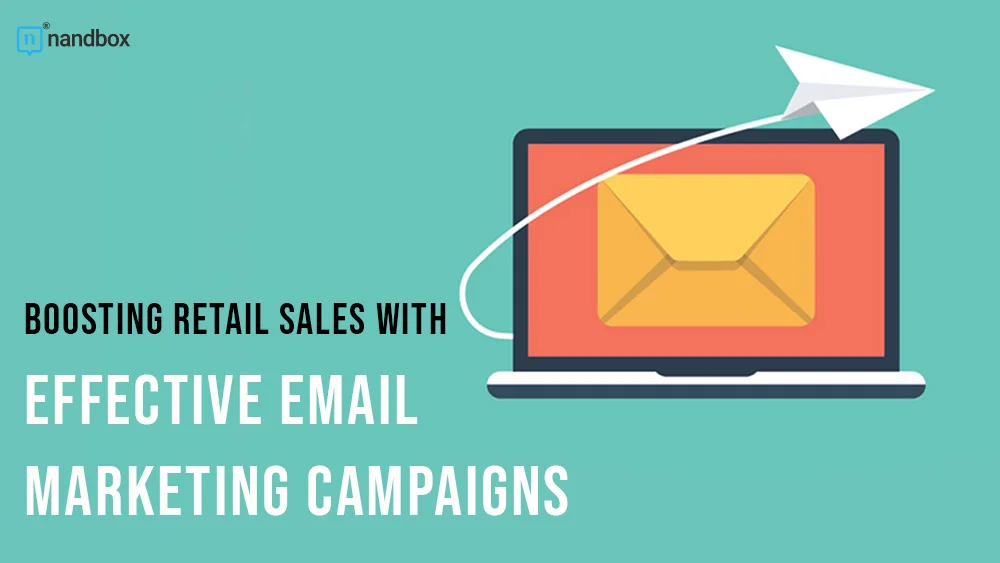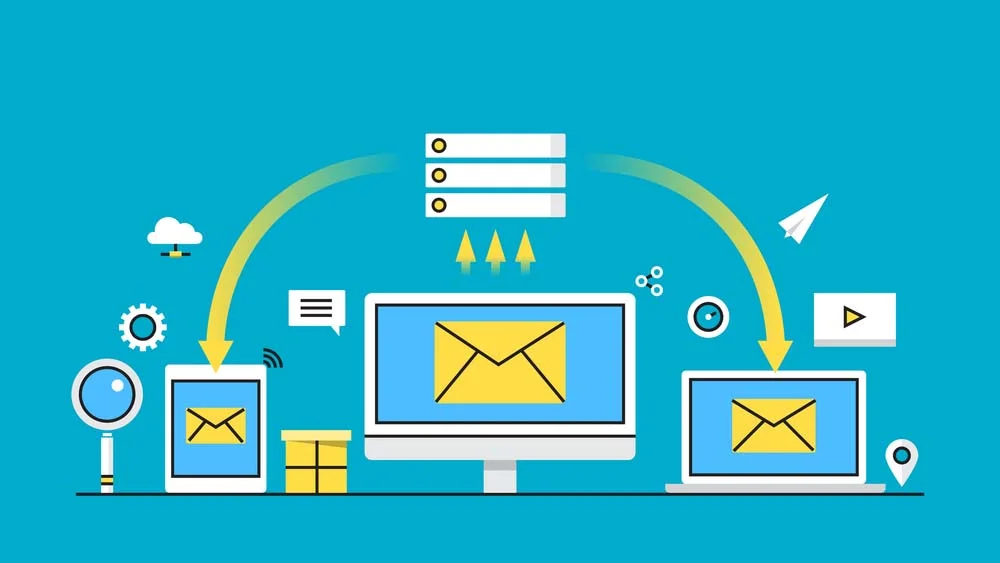How can the retail business stay ahead in the sphere of ever-evolving consumer preferences and fierce competition? How can it effectively engage customers and drive sales? The answer lies in proactive campaigns within the retail industry. In this bustling world of sales, where every interaction counts, email campaigns are essential to boost retail sales. But what makes them so impactful? It’s the ability to craft personalized messages, deliver targeted offers, and nurture lasting connections with customers—all directly in their inboxes.
Understanding the Retail Customer Journey to Boost Retail Sales
To create a successful retail marketing campaign, you need to start by understanding the customer journey. It typically consists of several key stages: awareness, consideration, purchase, retention, and advocacy. Let’s delve into each of them and explore how email marketing can play a pivotal role in guiding customers along the way.
Awareness
The customer journey starts at the awareness stage, where potential customers first encounter your brand and begin to familiarize themselves with what you have to offer. Email marketing can be a powerful tool for capturing attention and introducing your brand to new audiences. Use:
- Welcome emails to warmly introduce your brand and set the tone for future interactions.
- Educational content, such as newsletters or blog updates, to inform customers about industry trends, product features, or how-tos.
- Special offers to introduce customers to your products with exclusive discounts or promotions.
Consideration
During the consideration stage, customers evaluate their options and compare different products or brands. Email marketing can assist in this decision-making process by providing relevant information and nudging customers toward a favorable decision. Use:
- Product recommendations tailored to their preferences or past behavior can help them discover products that meet their needs.
- Comparison guides that highlight the unique benefits of your offerings compared to competitors guide customers toward choosing your brand.
- Customer reviews shared via email can build trust and credibility, assuring customers of the quality and satisfaction others have experienced with your products.
Purchase
The purchase stage marks the culmination of the customer’s journey, where they make the decision to transact with your brand. Email marketing can facilitate this final step by providing gentle reminders to seal the deal. Use:
- Abandoned cart emails to remind customers about items they left behind, encouraging them to complete their purchases.
- Limited-time offers can create a sense of urgency, motivating customers to take action before missing out.
- Order confirmations provide reassurance and transparency, confirm purchase details, and set expectations for delivery or fulfillment.
Retention
After the purchase, retaining customers becomes crucial for long-term success. Email marketing can help nurture relationships and encourage repeat business, turning one-time buyers into loyal patrons. Use:
- Post-purchase thank-you emails to express gratitude for their patronage and invite feedback, fostering a sense of appreciation and engagement.
- Product recommendations to suggest complementary products or accessories based on their past purchases
- Loyalty program updates inform customers about rewards, points, or exclusive perks available to loyal members.
Advocacy
The final stage of the customer journey involves transforming satisfied customers into enthusiastic advocates for your brand. Email marketing can harness this advocacy and amplify word-of-mouth marketing efforts. Use:
- Referral programs encourage customers to share their positive experiences with friends and family in exchange for rewards, leveraging existing relationships to expand your customer base.
- Shareable content, such as user-generated content or inspiring stories, can be quickly disseminated via email, empowering customers to spread the word about your brand within their social circles.
- Exclusive sneak peeks offer loyal customers early access or VIP previews, making them feel special and valued.
Segmentation and Personalization
One size does not fit all. That’s why segmentation and personalization are essential in email marketing. For the retail section, this means understanding your customers’ preferences and behaviors to deliver tailored messages that resonate with them. Personalized product recommendations, exclusive offers, and tailored content can enhance the shopping experience and drive sales.
You can segment your email list using various criteria, including demographics (age, gender, location), purchase history (frequency, recency, average order value), and behavior (website visits, email engagement). Partnering with reliable email list providers in the US can help you acquire comprehensive and accurate contact lists for better segmentation. Using email verification can help maintain a clean email list, reducing bounce rates and increasing the likelihood that personalized emails will reach and engage recipients. Analyzing these factors allows you to create segments that reflect your audience’s diverse preferences and behaviors.
Tips for Personalization
Personalizing email content goes beyond addressing recipients by their first name. It involves crafting messages that speak directly to their interests, preferences, and past interactions with your brand. Here are some tips for effective personalization:
- Use dynamic content to tailor product recommendations based on past purchases or browsing history.
- Send targeted offers and promotions based on customers’ purchase behavior or lifecycle stage.
- Incorporate personalized subject lines and email copy that resonate with each segment’s needs and motivations.
Mastering Retail Email Campaigns to Boost Retail Sales
Crafting compelling email campaigns requires attention to detail and a deep understanding of your audience. Here’s how to create emails that not only capture attention but also drive action.
Your subject line is your first impression. Keep it concise yet captivating, offering a glimpse into what recipients can expect inside. Personalization can also be a powerful tool here, making subscribers feel like the email was crafted just for them.
Next, focus on your email copy. Be clear and concise, highlighting the benefits of your offer rather than just its features. Use persuasive language that encourages readers to take the next step, whether making a purchase, signing up for an event, or downloading a resource. Additionally, using a DKIM checker can ensure your emails are properly authenticated, helping them reach inboxes securely and boosting recipient trust.
Visuals play a crucial role in engagement. Use eye-catching images or videos that complement your message and make it more memorable. Ensure your emails are designed with mobile users in mind, as most of your audience will likely view them on smartphones or tablets. A clean and visually appealing layout will enhance readability and keep recipients engaged.
Your call-to-action (CTA) should be prominent and compelling. Use action-oriented language that prompts readers to click through and take the desired action. Whether it’s “Shop Now,” “Learn More,” or “Sign Up Today,” your CTA should clearly communicate what you want recipients to do next.
Consider creating a checklist to ensure your email content is effective:
- Is your subject line attention-grabbing and relevant?
- Is your email copy clear, concise, and engaging?
- Do your visuals enhance the message without overwhelming it?
- Is your CTA clear, compelling, and easy to click on?
- Have you optimized your design for mobile devices?
- Have you personalized the content to resonate with your audience?
- Have you tested different elements to optimize performance?
- Have you ensured compliance with relevant laws and regulations?
By paying attention to these details and crafting emails with your audience in mind, you can create campaigns that stand out in crowded inboxes and drive meaningful engagement.
Conclusion
The potential of email marketing to boost retail sales cannot be overstated. By implementing the tips and strategies shared above, retailers can connect with their audience, drive engagement, and ultimately increase sales. Embrace these tactics and watch your retail business thrive in the digital age.





